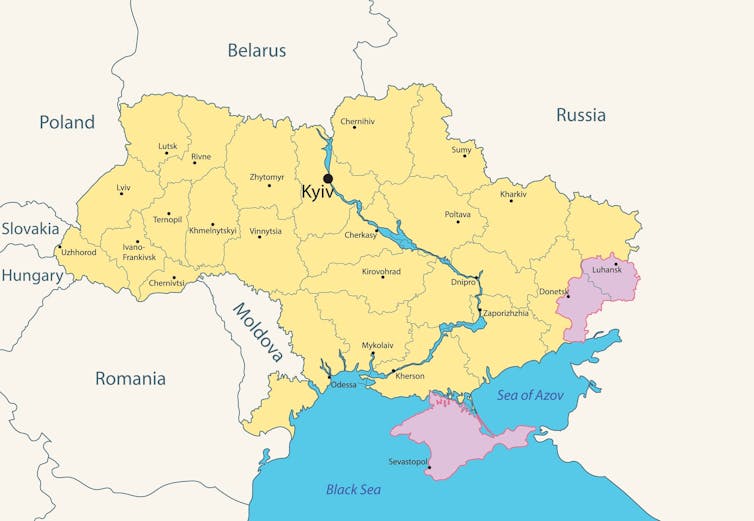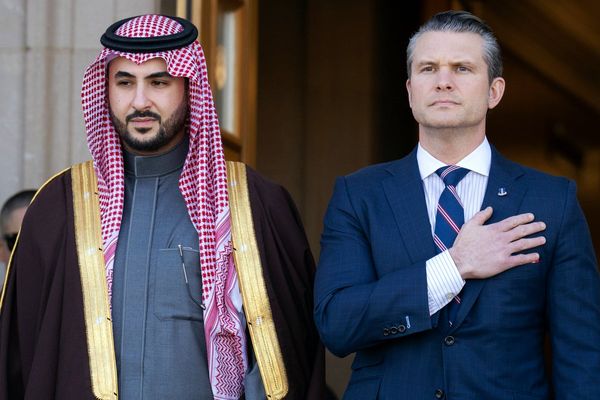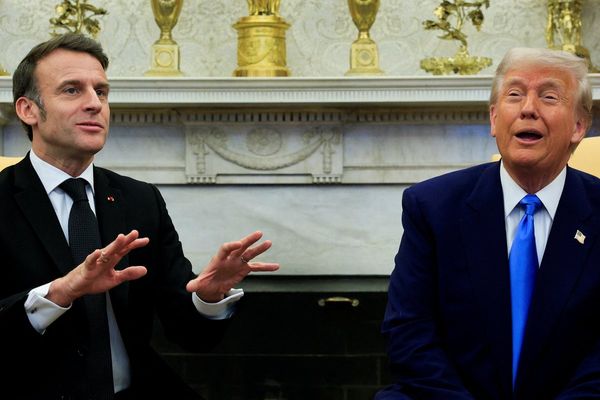The world held its breath on Tuesday afternoon when news reports came out of Poland that a missile had exploded in a village called Przewodów a few miles inside the the country’s border with Ukraine, killing two farmers. Could this be the moment that everyone has feared since the war began in February? For a time it appeared that this was a crisis that could spark escalation of the conflict beyond Ukraine’s borders into a Nato country, pulling the alliance inexorably into war with Russia and all that would entail.
It’s still not entirely clear how the missile was fired into Poland. All sides agree that the missile appears to have been a Russian-made S-300, a Soviet-era missile used by both Russia and Ukraine and designed for shooting down aircraft, drones and incoming cruise and ballistic missiles.
Examination of the missile’s trajectory made it clear the missile hadn’t been fired from Russia. There’s a growing consensus that it was most likely fired by Ukraine in self-defence against Russia’s massive missile bombardment, which Moscow declared had targeted military installations and energy infrastructure and had come no closer to the Polish border than 35km (22 miles).
This is our weekly recap of expert analysis of the Ukraine conflict. The Conversation, a not-for-profit newsgroup, works with a wide range of academics across its global network to produce evidence-based analysis. Get these recaps in your inbox every Thursday. Subscribe here.
But, as Nato expert Kenton White of the University of Reading writes, the fault-line that runs across Ukraine’s borders with Poland, Slovakia, Hungary, Moldova and Romania – all Nato members – give these accidents an added sense of danger. Article 5 of the Nato treaty enshrines the principle of collective defence whereby an attack on one member is viewed as an attack on all members.
White believes that, while desperate not to allow this conflict to escalate into an intercontinental war, the alliance is bound to react by increasing its assistance – military and otherwise – to Kyiv.
Read more: Ukraine war: Poland missile incident shows how dangerous the conflict could be for Nato

Article 5 has only been invoked once in Nato’s history: after the terrorist attacks in New York on September 11 2001. This led to the Nato-led mission in Afghanistan. Many analysts believed Poland would be more likely to invoke article 4 of the Nato treaty, which enjoins members to come together to consult “whenever, in the opinion of any of them, the territorial integrity, political independence or security of any of the parties is threatened”. But that seems unlikely now.
John Deni, an expert in security affairs – particularly in Nato – from the American University School of International Service, discusses the two Nato articles and how they apply to this crisis.
The most important thing Kyiv is looking for, of course, is more military aid from Nato and the west. State-of-the-art western defence systems and other weapons have given Ukraine the edge on the battlefield. But, as Ukraine’s president, Volodymyr Zelensky, never tires of reminding us, his country’s stocks of this equipment constantly need to be replenished.
Christoph Bluth, an international security expert from the University of Bradford, looks at Zelensky’s shopping list.
Read more: Ukraine war: Polish missile scare has given Nato fresh resolve to continue its support for Kyiv
On the diplomatic circuit
Zelensky, as is his wont, delivered this message by video link at the G20 summit in Bali this week. It was a curious summit, bringing together the Chinese president, Xi Jinping, and the US president, Joe Biden – who would have been feeling pretty chipper after his party’s surprisingly good performance in the US midterms. Russia was represented by foreign minister Sergei Lavrov, who apparently chose to sit out Zelensky’s message at his hotel.
Of course, Ukraine was high on the G20 agenda. But for a while all eyes were on Xi and Biden, who had their first face-to-face meeting in five years on the sidelines of the summit and emerged to deliver their respective messages. Happily for the rest of the world, the pair agreed that nuclear war was out of the question and, in an aside that would have given Vladimir Putin heartburn, Xi emphasised the need to respect countries’ sovereignty and territorial integrity. Birmingham University’s Stefan Wolff was watching the proceedings.
One of the concerns about the US midterms was that if the Republicans took control of both the House of Representatives and the Senate, this could affect Biden’s ability to sign off on continuing massive military and humanitarian aid packages for Ukraine.
Indeed, hard-right Trumpist congresswoman, Marjorie Taylor Greene, had promised that “not another penny [would] go to Ukraine” if that was the case. But Dafydd Townley, a teaching fellow in international security at the University of Portsmouth, believes that the poor performance of Donald Trump’s congressional proxies means that this is now unlikely to happen.
Read more: US midterms: what the result means for US backing of the Ukraine war
Elsewhere on the diplomatic circuit, Russia has announced plans to begin direct flights to Turkish-occupied northern Cyprus, a state recognised only by Turkey. Ross Bennett-Cook, a Turkey expert at the University of Westminster, and Bradford University’s Christopher Bluth, look at Ankara’s increasingly friendly relationship with Russia and the tensions between Turkey – a Nato member – and the rest of the alliance.
Read more: Northern Cyprus: Russia opens up direct flights as Putin builds Turkish alliance
Rave and rebuild
Finally, after nearly nine grim months of war, Ukraine’s rave scene appears to be dusting itself off and getting a groove on once again. A group of young activists has launched Repair Together, a movement that is committed to rebuilding some of Ukraine’s public entertainment spaces while dancing to their favourite DJs.
Clare M. Cooper, a lecturer in design at the University of Sydney who is passionate about both music and activism, brings us the story – which has a refreshing spin on the idea of whistling while you work.
Read more: Raves, repairs, and renewal: how young Ukrainians are bringing joy to the rebuilding effort
Ukraine Recap is available as a weekly email newsletter. Click here to get our recaps directly in your inbox.
This article was originally published on The Conversation. Read the original article.







